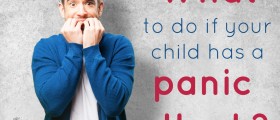Panic attacks are the most common type of anxiety disorders that affect one of 75 people worldwide at some point in their lives. These attacks are defined as episodes of sudden and intense fear that usually last for up to 30 minutes. Panic attacks typically reach their peak within 10 minutes, and subside over the next couple of hours. Sufferers typically describe these unpleasant events as the most frightening experience. Many of them report a fear they are having a heart attack or a nervous breakdown. Some people may even take days to initially recover from attack while still continuing to fear they might happen again.
Symptoms of panic attack
People suffering a panic attack often have a fear of dying. They may feel faint of nauseated or even losing control of themselves. Their sympathetic nervous system reacts in trembling, shortness of breath, irregular heartbeats, chest pain, hot or cold flashes, light-headedness, hyperventilation, feelings of choking and difficulty moving. Many of them have tunnel vision and derealization, which drives the sufferer to seek treatment in an emergency room.
Often these attacks are triggered by phobias, excessive stress, "what-if" thinking, or mistaken beliefs about the true nature of the symptoms.
Dealing with panic attacks
The first thing in dealing with panic attack is to understand the body’s emergency response. Most of the sufferers report intense physical symptoms and feeling as they are out of control. Panic attacks do not start instantaneously, as it may seem. They arise because of the person's anxiety that accumulates over a lot of time. The stress actually triggers the body's fight-or-flight response, as a way that the body reacts to stress and anxiety, perceived as a threat.
If a person suffering anxiety disorder suffers from diabetes, asthma or other medical problems, it would be recommended to seek medical attention.
One of the best ways to fight panic attack is to try to control the berating. If it is possible, if a person is calm enough, he or she should breathe in and out on count. To start, a person should breathe in for 2 and then out for 2, gradually increase the count to 4 and then 6.
Another good way to deal with the attack is to breathe into the paper bag. This is a great method to prevent hyperventilation but this method won’t work with people who are holding their breath when they panic. Every 10 breaths into and out of the bag should be followed by breathing without a bag for 15 seconds. It is also important to breathe in through the nose and breathe out through the mouth.








,-Asthma-And-Anxiety_f_280x120.jpg)








Your thoughts on this
Loading...